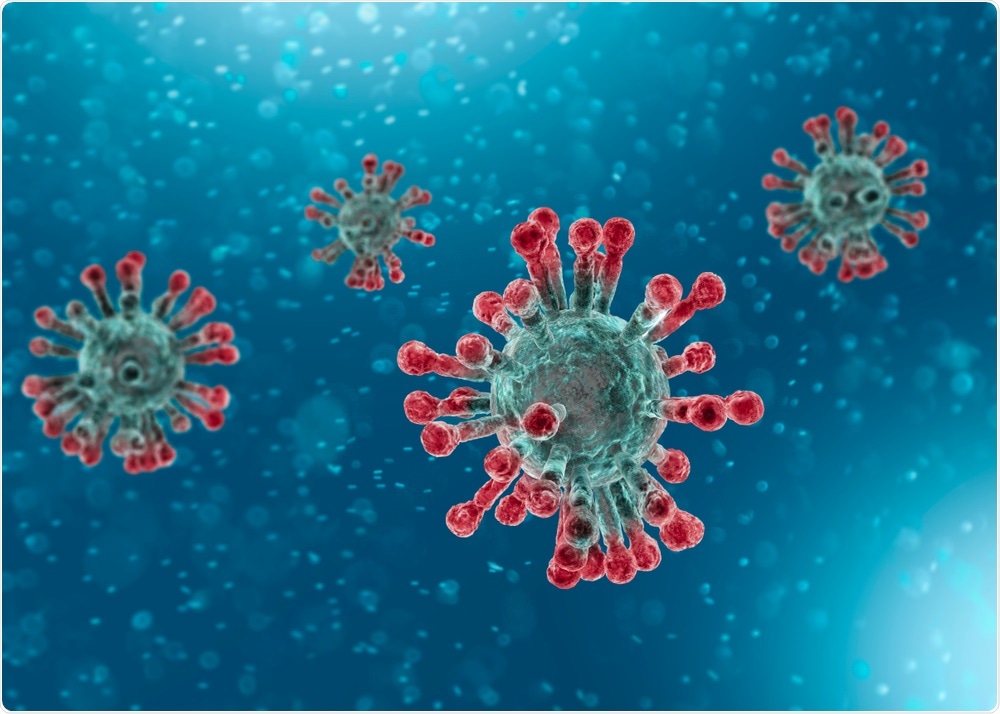Scientists from around the world wrote a letter to the World Health Organization (WHO), urging the agency to acknowledge that the novel coronavirus is airborne. More than 230 scientists presented evidence that people can catch the virus from droplets floating in the air.
Now, the World Health Organization pointed to emerging evidence that the coronavirus might spread by air further than previously thought.

Image Credit: Naeblys / Shutterstock
Airborne transmission
Studies have shown that some superspreading events or locations may cause clusters of infections with the coronavirus. For instance, clusters of infections have been reported in workplaces, churches, restaurants, and markets, even if there is no direct contact with infected patients.
Though the exact mechanism of how the virus spreads is still unclear, it is essential to acknowledge that evidence is pointing to aerosols as a mode of transmission of severe acute respiratory syndrome coronavirus 2 (SARS-CoV-2).
"We acknowledge that there is emerging evidence in this field, as in all other fields regarding the Covid-19 virus and pandemic and therefore we believe that we have to be open to this evidence and understand its implications regarding the modes of transmission and also regarding the precautions that need to be taken," Dr. Benedetta Alleganzi, WHO Technical Lead for Infection Prevention and Control, said during a briefing.
The agency is preparing a scientific brief to address the evidence that the novel coronavirus may be airborne, which contributes to its infectiousness and rapid spread.
However, Dr. Maria Van Kerkhove, WHO's epidemiologist, said that the WHO has looked at the reports since April. She said that they are focusing on the potential role of airborne transmission in other settings, such as those with poor ventilation.

Novel Coronavirus SARS-CoV-2 Colorized scanning electron micrograph of an apoptotic cell (red) infected with SARS-COV-2 virus particles (yellow), isolated from a patient sample. Image captured at the NIAID Integrated Research Facility (IRF) in Fort Detrick, Maryland. Credit: NIAID
Joining forces
The WHO acknowledges that transmission of the novel coronavirus is mainly by large respiratory droplets, which fly and land directly on the nose or mouth of other people.
Amid the coronavirus pandemic, a major research effort is underway to shed light on whether COVID-19 can spread through tiny airborne particles, which are released by infected people and remain floating in the air for hours.
The scientists are working with WHO sanity engineers to investigate how tiny aerosols containing the virus may be released into the air if they spread in closed rooms by air-conditioning units, and how infectious these particles are. However, over the past months, evidence of airborne transmission is increasing, wherein smaller droplets can float in the air for hours until other people inhale them.
Knowing more about the modes of transmission of the virus, including if it is airborne, is crucial in formulating policies to contain the spread of the virus.
The two-meter distance, and in some instances, six feet distance, is an essential factor in reducing the risk of SARS-CoV-2 transmission. If the aerosol transmission is correct, health officials may need to modify their guidelines. This way, the rate of infection and transmission can be reduced.
Currently, the WHO recommends social distancing, avoiding crowded places, and regular handwashing as the most important measures to reduce the risk of contracting the virus.
Global coronavirus toll
The WHO says that it took 12 weeks for the world to reach 400,000 cases of COVID-19, but over the last weekend, there were more than 400,000 cases across the globe. Now, the number of cases has topped 12.23 million, with more than 554,000 deaths.
"The outbreak is accelerating, and we have clearly not reached the peak of the pandemic. While the number of deaths appears to have leveled off globally, in reality, some countries have made significant progress in reducing the number of deaths, while in other countries deaths are still on the rise," Dr. Tedros Adhanom Ghebreyesus, WHO's director-general, said.
"Where there has been progressing in reducing deaths, countries have implemented targeted actions toward the most vulnerable groups, for example, those people living in long-term care facilities," he added.
The United States reports the highest number of cases, exceeding 3.1 million, followed by Brazil, with more than 1.75 million cases. In the following weeks, the number is expected to skyrocket as many countries have eased their lockdown restrictions. Many businesses have reopened, and residents are returning to their workplaces.
With the threat of airborne transmission, especially in closed areas like offices and workplaces, companies and their workers should practice infection control measures, such as physical distancing, washing the hands regularly, and regular disinfection. Also, wearing of masks should be practiced reducing the transmission of the potentially-fatal virus.